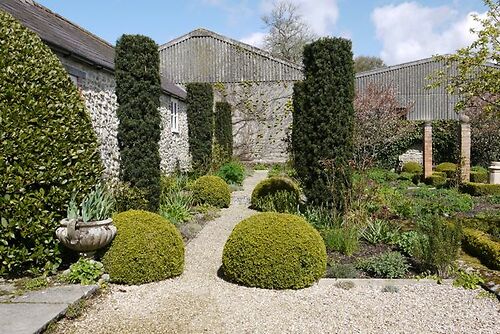Irish Yews
Irish yews: funny old things. For starters, they’re meant to all be the same, clones of the original two trees found in Northern Ireland. BUT that’s clearly not the case. Yesterday I cam across a row of 6, 2 of which were completely different. They didn’t have that super dark foliage, almost bluish black, and when untied they split apart like banana peel.
More importantly, it’s what to do with Irish yew? The options seem limited: leave them alone, or chop them in half? Tie them in, or clip them? Columnular, or vase shaped? What dilemmas.
Yesterday, the brief was simple. They were slowly but steadily developing the top heavy, vase shaped look that seems to be the norm, despite having been tied in for a few years, but the owner wanted them columnular. So I retied, but rather than bracing them around the outside I tied in individual branches (trunks?) using a firm trunk in the inside to tie to. The reasoning behind this was as follows:
As with Cupressus sempervirens, it seems inevitable that individual branches can get weighed down by their own growth, and peel away from the main body of the tree. Sometimes one passes big old trees with a colossal carbuncle growing out the side - one of these peel-aways that has been neglected and allowed to grow as a horizontal, not vertical, limb - yet all it would have taken is a quick go over with the shears to take the weight off to avoid such carbunculous growth. IF, however, the trees have been braced around the oiutside, as seems popular, one either ends up accidentally cutting the string, or ruining the shears (I suggest Okatsune 29 inchers, incidentally) on wire. HENCE my internal bracing.
So the job invoved a fair bit of internal rummaging, a lot of back and forwarding to check straightness, and not a lot of clipping at all. All invoved seemed happy.
Anyone else involved in these conundrums?
Is fastigiate the right term for this? Really?

